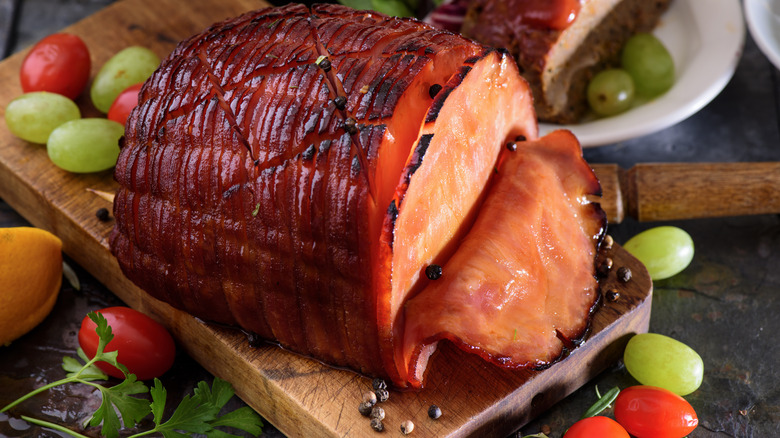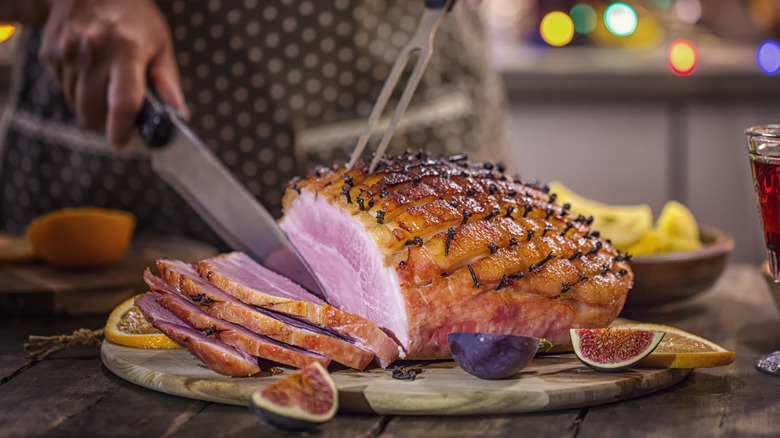When Is The Best Time To Glaze A Ham?
Though they're most popular during the holidays, a baked ham can be enjoyed any time. Pre-cooked versions, in particular, are easy to prepare and pop in the oven, and taste divine when paired with a creamy carrot casserole and a nice salad. One of the key components of a crowd-pleasing, clove-spiked ham is its beautiful glaze, an accompaniment that contrasts the sweet and spicy flavors. This topping, intended to bake into the ham, might be an intriguing chutney, basic brown sugar mixture, or a sweet-and-tangy honey mustard glaze. But it begs the question: When should you add the glaze?
It might seem logical to add the glaze before you pop everything into the oven, or add it at intervals, the way you baste a turkey. In fact, both approaches run the risk of burning the glaze, converting sugars into a bitter, charred caramel, or losing the flavor altogether. Instead, wait until the last 20 minutes or so of the bake time to add the glaze. If you've prepped the ham well, the glaze will rest right on top, and work its way into all sorts of nooks and crannies to add extra flavors and taste contrasts to your baked ham's crust. While it's pretty hard to mess up a delicious, slowly baked ham (if you're following the recipe), there are definitely ways to ensure you've made the best possible main dish you can.
Score early, glaze late
Regardless of whether your ham is raw or pre-cooked, score the ham so the glaze seeps into the flesh a bit. Unlike with the glaze, make sure to add cloves and any seasonings before popping everything in the oven. The nice thing about waiting until the end of the bake to add the glaze is it means you can make it (or heat it up) while the ham is baking. You'll have plenty of time to blend the ingredients and simmer to get the consistency just right. Since a large, uncooked ham can take several hours to bake, set a timer to remind you when to make and add the glaze.
When it is time to glaze, remove the ham from the oven (it's safer and easier this way). Brush the glaze over the top and sides and pop it back in. You can flip the ham halfway through cooking and glaze the other side for a more complete look and taste. You can also brush a final top coating, like a sauce, while the ham is resting on the counter.
Of course, if you have a small, pre-cooked ham that only requires 15 or 20 minutes in the oven, you'll want to add the glaze at the beginning. Everything will cook up together just fine. Alternatively, turn up the flavor (and wow factor) by using brown sugar and a kitchen torch for a different glazing approach.

